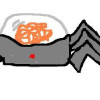-
Blue0x
-
 EleventhHour
EleventhHour -
raoul
-
blattrules
-
cybervseas
-
henfredemars
-
Xaphanos
-
 girlfreddy
girlfreddy -
 KaRunChiy
KaRunChiy -
lemonSqueezy
-
AliveDisciple
-
 andyburke
andyburke -
 shaiatan
shaiatan -
SnotFlickerman
-
tehBishop
-
Drusas
-
AThing4String
-
Ranvier